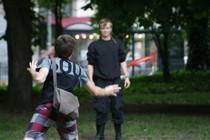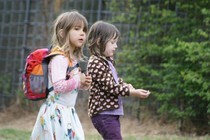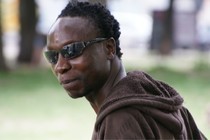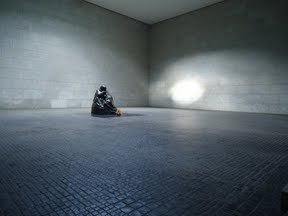Beth Kephart's Blog, page 237
June 15, 2011
If I Loved You, I Would Tell You This/Robin Black: Reflections

It had gone on too long. "Robin Black," I kept hearing. "Robin Black's short stories." Urged to read Black by writing friends whose taste I trust, I finally and at long last did, savoring a story or two from her debut collection, "If I Loved You, I Would Tell You This," each day, thinking about her characters in crowded places or while almost alone on this or another strange and unfamiliar street.
Eleven stories written over the course of a decade. Eleven stories both immaculately precise and involvingly odd, so that we know these people but can't always guess what they will do, can hear the hurry of their exasperation, feel the claustrophobia of their secrets, but can't protect them from their own determined, isolating brokenheartedness.
Black's characters do wrong, but are not bad people. They bury things to protect themselves or another, but protection is thin and wears quickly. They ache, but their ache isn't always rightly answered. They live complicated inner lives inside ordinary circumstances. I found them compelling. I found Black smart and succinct and lacerating and funny.
Her dialogue is some of the best I've read. Her stories wedge inside and stay.




Published on June 15, 2011 23:43
Art Unbounded, Graffiti Alive: The Kunsthaus Tacheles Artist Collective
They condemned the building years ago, but the artists won't give it up, have claimed every square inch of this carved out, graffiti-encrusted sanctuary as their own. You go to see, but don't you also go to support, buying graphic tees and Dali-esque pendants and a single leather bracelet, because the art must live on.
This post is for my friend, Tamra T. She knows why.

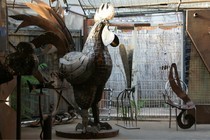
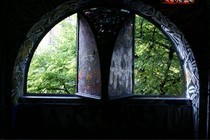






This post is for my friend, Tamra T. She knows why.








Published on June 15, 2011 11:38
Consecrating Void: The Fallen Leaves Installation at the Jewish Museum of Berlin
I can't do this justice. These are the facts: You walk for hours. You find your way onto Lindenstrasse, at the entrance to The Jewish Museum Berlin. For five euros you begin your journey through Daniel Libeskind's walls and void, steel and concrete, up and down his axes, until you come to what is called the fifth void, the Memory Void. Here, on long term loan, is Shalechet, an installation by Israeli artist Menashe Kadishman.
From the plaque: "He has dedicated the over 10,000 faces covering the floor to all innocent victims of war and violence."
Others walked across the installation. I could not bear to. But it was the sound and echo of those heavy steel faces, the way those walking had to catch their balance, that proved most devastating of all.
I stood against a wall and cried.

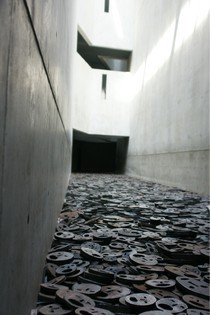





From the plaque: "He has dedicated the over 10,000 faces covering the floor to all innocent victims of war and violence."
Others walked across the installation. I could not bear to. But it was the sound and echo of those heavy steel faces, the way those walking had to catch their balance, that proved most devastating of all.
I stood against a wall and cried.






Published on June 15, 2011 07:10
June 14, 2011
with the artists of the park
Published on June 14, 2011 11:02
Memorial to the Murdered Jews of Europe
19,000 square meters. 2711 concrete blocks. An undulating, solitary path within a forever tilting and leveling field of stelae. Built according to a design by Peter Eisenman. Photographed just ahead of a downpour.







Location:Berlin




Published on June 14, 2011 08:01
Four a.m.
Published on June 14, 2011 00:23
June 13, 2011
The sun shines,
Published on June 13, 2011 14:25
The old, the new, the transparent in between
Published on June 13, 2011 10:02
A moment of silence
Published on June 13, 2011 09:19
June 10, 2011
Dreamland Social Club/Tara Altebrando: Reflections
 Last week, thanks to Meghan Cox Gurdon's Wall Street Journal article, "Darkness Too Visible," the young adult book world was aTalk and aTwitter (and aFacebook and aBlog, including me, here.) Are the books being written for younger readers too twisted, tormented, unhappy? Do they sensationalize, titillate, and provoke in psychically annihilating fashion? Do they dumb things down or reach over and through? Can censorship be defended? Do real writers write YA?
Last week, thanks to Meghan Cox Gurdon's Wall Street Journal article, "Darkness Too Visible," the young adult book world was aTalk and aTwitter (and aFacebook and aBlog, including me, here.) Are the books being written for younger readers too twisted, tormented, unhappy? Do they sensationalize, titillate, and provoke in psychically annihilating fashion? Do they dumb things down or reach over and through? Can censorship be defended? Do real writers write YA?Conversations like that one give birth to generalities. Today, I'd like to get specific. I'd like to suggest that Tara Altebrando's newly released Dreamland Social Club be given a chance by those who have lately argued that YA is a lesser form of art. No genre, I'd like to suggest, is immune from the flat-footed, a-musical, overly simplified eye roll of a tale. Nor, on the other hand, does genre itself preclude beauty and sophistication.
With Dreamland, Altebrando, a Harvard graduate with well-respected adult titles to her name, provides proof—again—that contemporary young adult literature can be smart, full of heart, and veering toward classic. That its sentences can be crisp and alluring, its context rich and richly researched, its plot complex and original. Dreamland is the story of a teen named Jane and her brother, Marcus, who find themselves (along with their dad) living on Coney Island in their deceased grandfather's house. There's an old carousel horse tethered to the living room radiator, reels of strange old cinema in the attic upstairs, grandmotherly attire in a bar basement downstairs, and a set of keys that lead to forsaken wonders in the old amusement parks. This is a world filled with tattooed boys and giants and miniature people. A world in which a young amputee dances hard. A world that pits heartless developers against the long survivors of this town.
It's a world, and it's a story. It is also, evocatively, history and all that Altebrando's imagination does with time now gone.
Look, if you have a moment, to see how Tara Altebrando writes. Then buy the book to find out what happens for yourself:
She stood at the window for countless silent minutes, studying the view. Raindrops clung like white pearls to the black electrical wire strung between the house and a wooden pole at the end of the yard. Other buildings loomed there, with their fire escapes zigzagging between windows, and Jane thought of the countless Brooklynites who lived there, unaware that there was a new kid on the block.




Published on June 10, 2011 10:20


